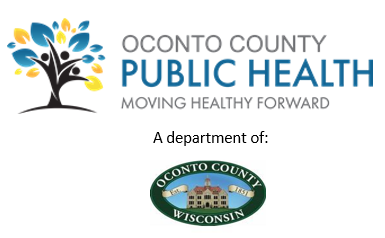DHS Encourages All Wisconsinites to Take Steps to Prevent Childhood Lead Exposure
During National Lead Poisoning Prevention Week (October 23-29), the Wisconsin Department of Health Services (DHS) is encouraging all Wisconsinites take steps to prevent and detect childhood lead exposure by getting the facts, helping children get tested for lead exposure, and checking homes for lead hazards.
“During National Lead Poisoning Prevention Week, we urge awareness and action to prevent the life-long impact of lead exposure,” said Paula Tran, State Health Officer. “In Wisconsin, we have made continued progress in preventing childhood lead poisoning. However, lead hazards remain, and pose risks to children, in communities all across our state. Working together, we can reduce childhood lead exposure, eliminate lead hazards, and build a healthier future for all Wisconsin children.”
Childhood lead poisoning remains a serious public health crisis. Primarily caused by swallowing or breathing in dust from deteriorating lead-based paint, lead poisoning can cause learning and behavior problems, slowed growth and development, and hearing and speech problems. There are an estimated 350,000 homes in Wisconsin with lead-based paint hazards; homes built before 1978 are especially likely to contain lead paint. Other common sources of lead can be contaminated drinking water from corroded lead service lines or household plumbing; imported candy, spices, makeup, or toys; and adults bringing lead into the home due to exposure from some jobs and hobbies.
Over the past two decades, more than 230,000 Wisconsin children under the age of 6 have been poisoned by lead. Every county in Wisconsin has reported a child with lead poisoning over this time period.
“No amount of lead exposure is safe. While lead exposure can impact anyone, children under the age of 6 are especially vulnerable to lead exposure,” said Brian Weaver, DHS Lead Policy Advisor. “The most important way to prevent childhood lead poisoning is to protect children from exposure to lead hazards, and it’s important to detect exposure early by getting a blood lead test.”
DHS encourages parents, guardians, and caregivers to take action by:
- Getting the facts: Learn about lead hazards that may exist in your home or your community and how to prevent lead exposure by exploring DHS’s online resources.
- Getting children tested: Talk with your child’s health care provider about the risk of lead exposure, and to determine if a blood lead test is needed. Every child living in the cities of Milwaukee or Racine should be tested for lead exposure three times before the age of 3. All other families should have a child under 3 tested if they live in or regularly visit a house built before 1978; have a sibling or playmate with lead poisoning; or are enrolled in Medicaid or the Women, Infants, and Children (WIC) Program.
- Checking your home for lead hazards: The most common cause of lead exposure is from swallowing or breathing in dust from deteriorating lead-based paint. To check your house for lead-based paint hazards, a homeowner can hire a certified lead inspector or risk assessor) to conduct an inspection on your home. To find out if you have lead in your drinking water, have your water tested. Contact your local health department or water company to find out about testing your water. If you rent, then ask your landlord to have your home or apartment tested. Tenants can also contact their local or Tribal health department or local tenant resource center to learn about resources.
DHS encourages health care providers who serve children to take action by:
- Getting the facts: Know how lead exposure can harm children, who is most at risk, and how to manage children with lead poisoning. Visit DHS’s health care guidance page.
- Getting children tested: Learn the Medicaid testing requirements(link is external) and Wisconsin blood lead screening recommendations. Make sure all children in these categories receive age-appropriate blood lead tests or are called back if they have been missed.
- Check your patient’s history: Ensure your patients have received age-appropriate blood lead tests
DHS encourages homeowners, property owners, and landlords to take action by:
- Getting the facts: Lead exposure is a serious health concern for people living on your property. If the property you own was built before 1978, it is likely to have lead-based paint hazards.
- Getting your property tested: Hire a certified lead inspector or risk assessor(link is external) to conduct an inspection of your property and investigate if your property has lead service lines in the plumbing that could be contaminating the drinking water.
- Making your property lead-safe: If you are renovating your property, make sure you are practicing safe renovation techniques. Hire a certified lead contractor to remove or remediate any lead hazards in your home. Consider if you are eligible for DHS’s Lead-Safe Homes Program.
For more information on how to protect your family from lead exposure and keep your home lead safe, visit the Lead-Safe Wisconsin webpage.
